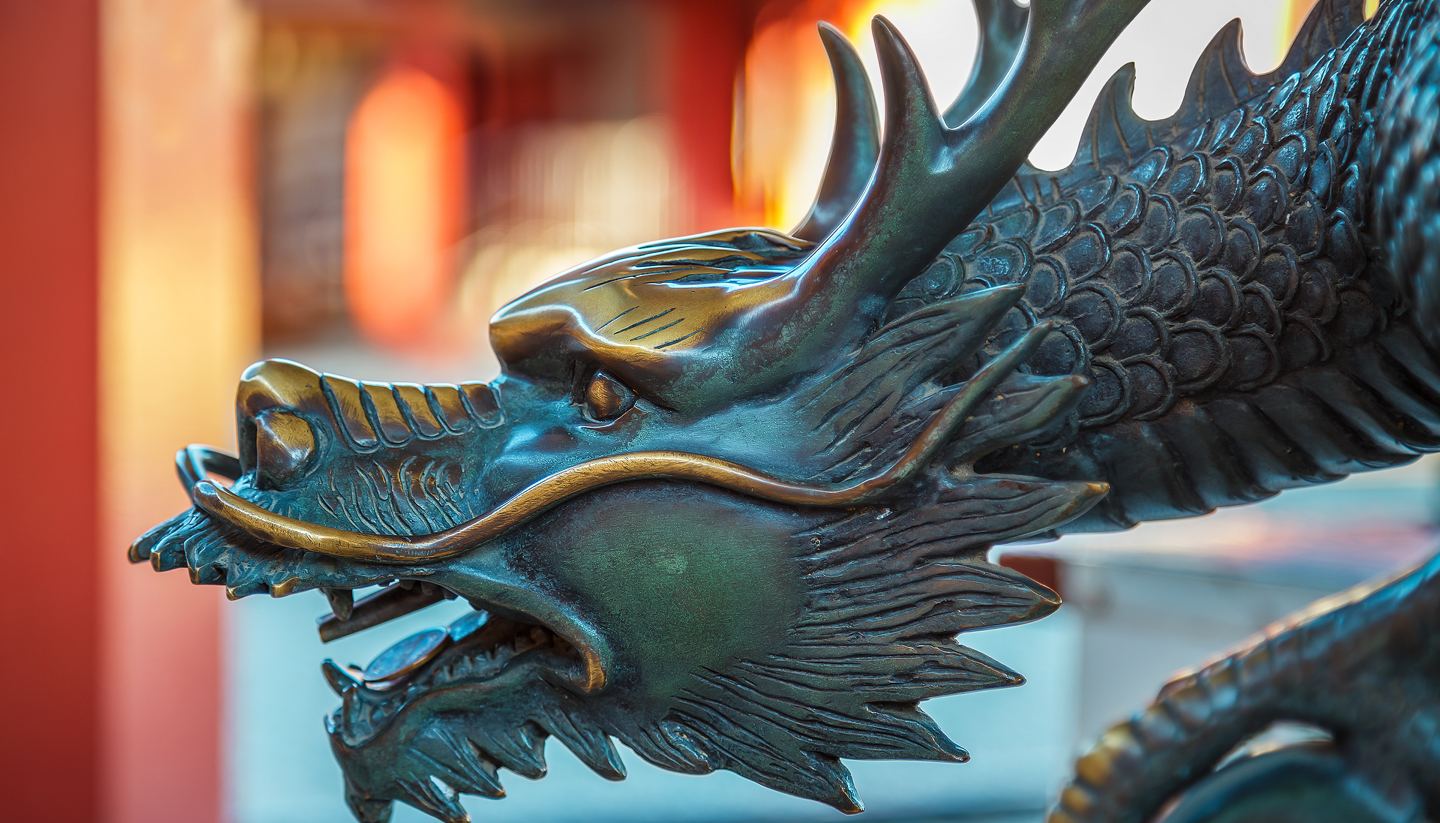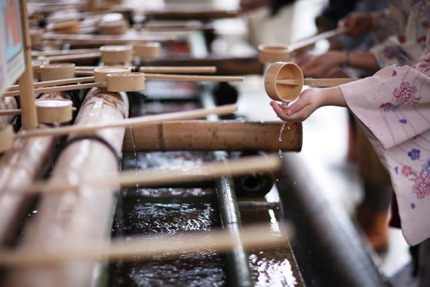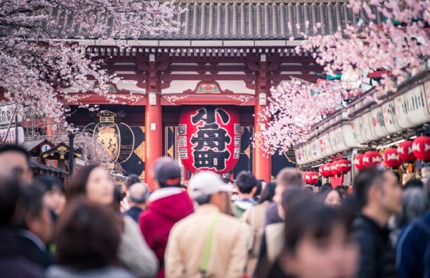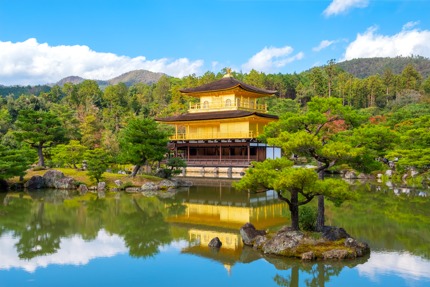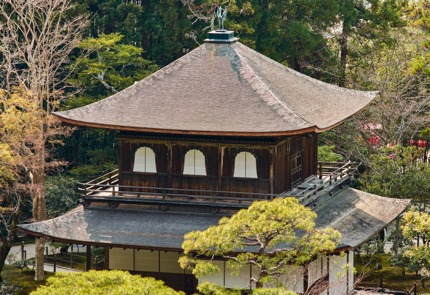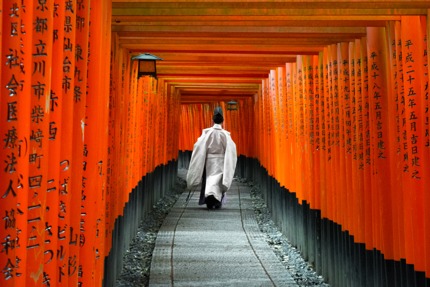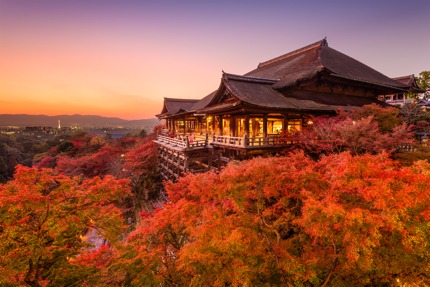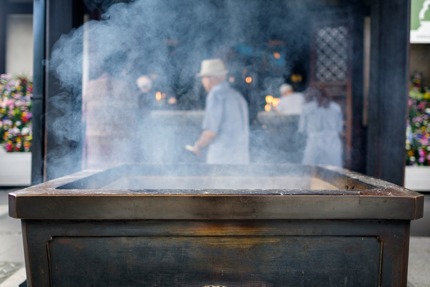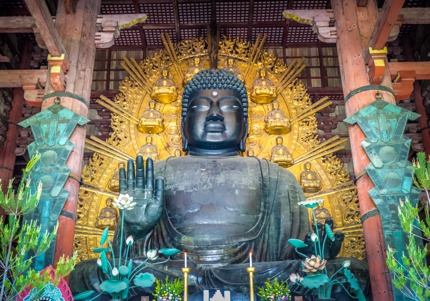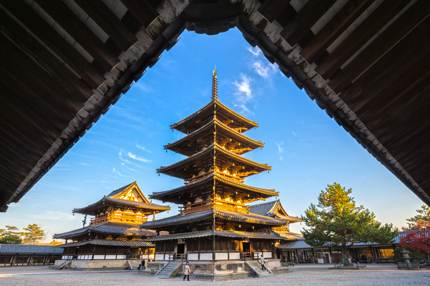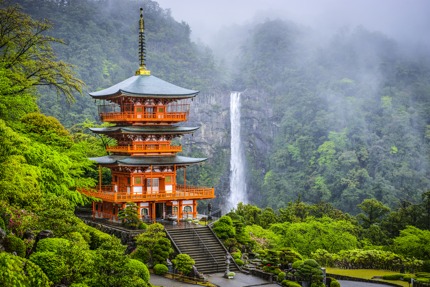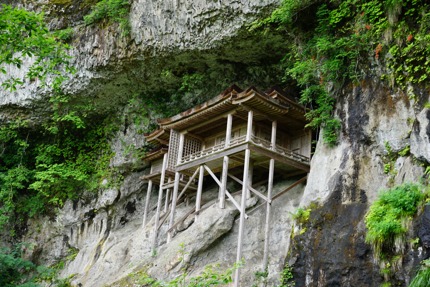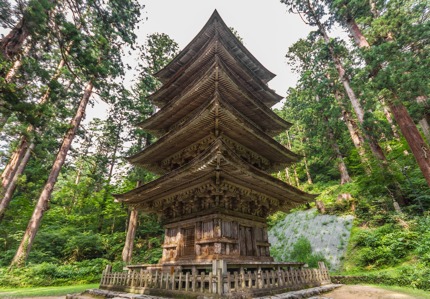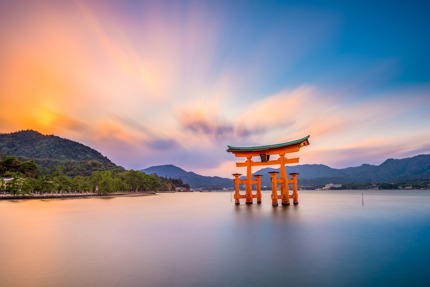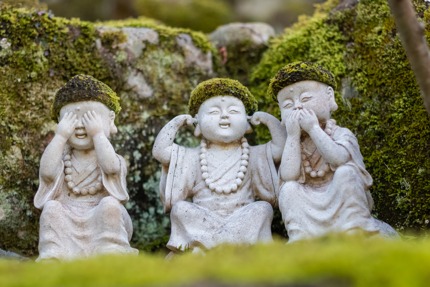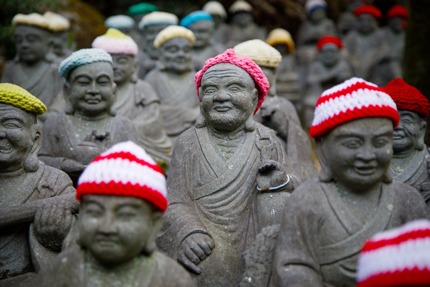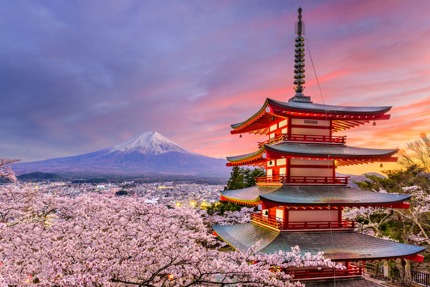Stepped in heritage, thousands of shrines and temples dotted around Japan and here are 15 of the best shrines and temples to visit
Shintoism and Buddhism are the two main religions in Japan and accordingly, shrines and temples are an integral part of Japan’s cultural tapestry. You’ll find these places of worship hidden in forests, sandwiched between office towers on busy streets or clinging to mountaintops. Visiting them can be a spiritual experience, a chance to gain insight into Japanese traditions and history, or simply enjoy a serene escape from the frenetic pace of city life.
Shrines with a suffix to the name like ‘gu’, ‘jingu’, ‘jinja’, ‘sha’, ‘taisha’, are usually associated with Shintoism, a polytheistic religion native to Japan. They have an entrance gate (torii) that symbolises the barrier between the sacred and the profane. Visitors are expected to bow before passing through the torii and to rinse your hands and mouth (but do not touch the dipper with your lips) in a purification basin known as temizuya or chozuya before entering.
Similar etiquette applies to Buddhist temples, which usually have the word ‘ji’ or ‘dera’ added to the name. Buddhist monks live and train in temples, and many of them also teach Zazen (seated meditation) to the public.
With thousands of temples and shrines dotted around Japan and most extend a warm welcome to visitors, here is where to begin exploring.
1. Meiji Jingu, Tokyo
Tucked away in a dense forest between Shinjuku and Shibuya, two of Tokyo’s busiest districts, Meiji Jingu commemorates the virtue of Emperor Meiji who modernised Japan during his reign (1867-1912) while preserving the unique cultural and historical roots.
Nikkusai, a Shinto ritual of peace and good fortune, is held every day at 8am and 2pm. The well-tended Iris Garden within the compound also offers a delightful experience; the best blooms are from late May to mid-June. If you’re visiting in late autumn, the Gingko Avenue (Icho Namiki) is a prime leaf-viewing territory.
2. Sensō-ji, Tokyo
Tokyo’s oldest Buddhist temple was founded in 645 to honour Kannon, the goddess of mercy. Legend has it that two brothers found a statue of the goddess floating in the Sumida River. Every time they put the statue back into the river it returned to them, inspiring the pair to build Senso-ji nearby.
Today, the temple is one of Tokyo’s most popular visitor attractions. A giant 700kg (1,543 pounds) lantern at the Kaminarimon Gate watches over swirling incense smoke from a massive cauldron – the smoke is said to bestow good health to worshippers. A neat souvenir to get from the temple is an amulet – there are two dozen or so available, endowed with all sorts of blessing from traffic safety to academic success.
3. Kinkaku-ji, Kyoto
Get ready to light up your Instagram with images of Kinkaku-ji (Golden Pavilion), one of the most photographed sites in Japan. Perched on the wooded banks of a pond in northern Kyoto, Kinkaku-ji was once the retirement villa of 13th-century shogun Ashikaga Yoshimitsu but is now a Buddhist temple.
Its top two storeys are completely covered in gold leaf and each floor takes inspiration from a different style of Japanese architecture. Admire the Shinden style traditionally used for palace building on the first floor, soak up the atmosphere of a samurai residence on the second floor and see a Chinese Zen Hall on the third floor capped with a golden phoenix.
While the temple buildings have burned down and been replaced several times since Yoshimitsu’s death in 1408, the historic temple gardens retain their original design. They hide a teahouse as well as statues that people throw coins at for luck and a pond said never to dry up.
4. Ginkaku-ji, Kyoto
8km (5 miles) east of Kinkaku-ji lies Ginkaku-ji (Silver Pavilion), built by the grandson of Yoshimitsu, the shogun who commissioned Kinkaku-ji. Despite its name, the temple was never covered in silver leaf. Some believe the misnomer was due to the Onin War fought between families of samurais between 1467-1477 and as a result of the war, the grandson didn’t have enough money to cover the building in silver leaf.
Now a Buddhist temple, the Silver Pavilion and its neighbouring temple building aren’t usually open to the public, but you can enjoy a stroll through the beautiful moss and sand gardens. For a longer walk, take the Philosopher’s Path that begins just outside the temple and ends at the historic neighbourhood of Gion. A section of the path runs parallel to a cherry tree-lined canal, making it one of the most popular hanami (cherry blossom viewing) spots in Kyoto.
5. Fushimi Inari Taisha, Kyoto
Inari is the Shinto god of rice and with rice being the staple food, it shouldn’t come as a surprise that Japan has about 30,000 Inari shrines. The most famous one is the head shrine Fushimi Inari Taisha in Kyoto.
While the main shrine itself is majestic, great throngs of visitors come to walk the 8km (5 miles) long “Thousand Torii Gates” (Senbon Torii), a trail that connects the shrine to the summit of Mount Inari. Lined with some 10,000 red torri gates – some are placed close to each other while others have a considerable gap between them – the trail offers a truly remarkable experience. The pillars of each gate are covered in Japanese characters – they are the names of the donors along with the dates of their donation. Each donation symbolises a passing of prayers from the donor to the deity.
6. Kiyomizu-dera, Kyoto
Built on the site of the Otowa waterfall, Kiyomizu-dera translates literally as ‘pure water temple’. Legend has it that the water here has mystical properties and that drinking from one of the waterfall’s three cascades can confer success at school, a fortunate love life and longevity – but you shouldn’t drink from all three streams as it is considered greedy to do so.
Kiyomizu-dera attracts visitors because from the wooden stage that juts out from the main hall, you get awe-inspiring views over the basin of Kyoto. Every late November to early December, the temple illuminates its massive ground and gardens so visitors get to enjoy striking autumn foliage at night.
7. Shitenno-ji, Osaka
For a thrilling trip into Japanese history, pay a visit to this ancient Buddhist temple with its five-storey pagoda and art-packed treasure house. Shitenno-ji is one of the country’s oldest temples. It was founded in 593 by Prince Shōtoku who championed Buddhism in Japan.
The existing buildings are exact reconstructions of the original 6th-century design. Highlights include ascending the inner precinct’s towering pagoda, exploring the Main Hall in which Prince Shotoku is enshrined as a statue of Kannon and discovering the paintings and scriptures on display in the treasure house.
The Gokuraku-jodo Garden within the compound is also worth a visit. Designed to reflect Sukhavati, a blissful concept of paradise described in one of the sutras by Buddha Amitabha, the garden is an idyllic place to dream away an afternoon.
8. Todai-ji, Nara
The main hall at Todai-ji was once the largest wooden building in the world. This impressive and historically significant temple also houses one of Japan’s largest Buddha statues – a 15m (49ft) high colossus cast from over 400 tonnes of bronze.
There’s plenty to see and explore in the temple grounds, including models of how the site looked when it was founded in the Nara Period, several museums, some fine Buddhist carvings and serene gardens.
Every 1-14 March, Todai-ji hosts the spectacular Omizutori fire festival and has done so for over 1250 years. The ritual sees giant torches made from pine being lit, carried to the balcony of Nigatsudo (a building within the temple compound) and held over large crowds below. Sparks from the torches are said to protect onlookers from evil spirits.
9. Horyu-ji, Nara
Most of Japan’s ancient temples have burned down and been rebuilt at least once in their history, but Horyu-ji is a notable exception. Founded by Prince Shotoku, an early proponent of Buddhism in Japan, it shelters the world’s oldest-surviving multi-storey wooden structures and became Japan’s very first UNESCO World Heritage site in 1993. The central gate (Chumon), the main hall and the five-storey pagoda all date back to the Asuka Period (552 to 645), while the main hall houses some of the oldest statues of Buddha in Japan.
There are other cultural treats to unearth here as well, including an impressive art collection in the Gallery of Temple Treasures.
10. Seiganto-ji, Nachisan
Up until the 19th century, Buddhism and Shintoism were often practised simultaneously in Japan. Efforts to establish a Shinto-orientated state during the Meiji restoration led to the enforced separation of the religions, and nowadays only a few temples exist side-by-side with shrines. Seiganto-ji is one of those rare exceptions. Perched photogenically in front of the Nachi Falls, the site is both culturally important and a spectacular place to visit. It’s a key destination on the Kumano Kodo, a UNESCO-listed network of pilgrimage trails that runs through the southern Kansai region.
Snap a classic shot of the bold red pagoda with the Nachi Falls in the background before visiting the Kumano Nachi Taisha Shrine with its object-packed treasure room.
11. Sanbutsu-ji, Misasa
If you’re planning to visit this temple that clings to a cliff face, don’t forget to pack your hiking boots. Sanbutsu-ji’s main hall is set at the base of Mount Mitoku – but follow the trail that heads steeply up the mountain and you’ll discover a series of stunning subsidiary halls.
Most striking of them all is Nageiredo Hall, which is built into the mouth of a cave high in the sheer wall of the mountain. Local legend says that the structure was built from the ground up by the spiritual power of Japanese mystic En no Gyōja. When you see this gravity-defying hall perched on stilts beneath a roof of rock, you might just believe the myths.
12. Dewa Sanzan Shrines, Tsuruoka
Dewa Sanzan refers to the three sacred mountains that symbolise reincarnation – Haguro-san (the past or birth), Gas-san (the present) and Yudono-san (the future or rebirth) – each with a small shrine on or near its summit.
These mountains are the primary hub for seekers of enlightenment who come here to partake in Yamabushido or mountain worship. The concept of Yamabushido blends activities like walking in the forests, having simple meals, meditating beneath one of the waterfalls into a self-discovery journey.
Symbolising birth, the shrine atop Haguro-san is usually the first shrine visited by pilgrims. To get there, you need to take the 2,246-step stone staircase through a cedar forest. Along the way, you will also see a small selection of temples and shrines dedicated to the many deities, as well as a five-storey wooden pagoda made without nails.
13. Itsukushima Shrine, Miyajima
Located off the coast of Hiroshima, Miyajima, meaning Shrine Island, is firmly on the radar of many highbrow tourists. The most famous sight on Miyajima is Itsukushima Shrine and its iconic ‘floating’ Torii gate. Actually the gate is firmly constructed in a small inlet but during high tide, rising water level covers the land surrounding the gate and makes it look like it is floating in the sea.
While the ‘floating’ Torri gate is undoubtedly magical, the shrine and its buildings – a prayer hall, a main hall and a Noh (musical drama) stage – are all constructed on stilts and connected by boardwalks; they are well worth a visit too.
14. Daishō-in, Miyajima
A five-minute walk south of Itsukushima Shrine lies Daishō-in, an ancient temple nestled on the slopes of Mount Misen. Daishō-in is a holy site of Shingon Buddhism and the temple houses a statue of the sect’s founder Kobo Daishi, who was said to practise Buddhism on the island.
A warren of buildings and statues scattered around the vast temple compound – some of the statues are extremely adorable, including a trio that depicts ‘see no evil, hear no evil and speak no evil’. Many of the statues wear a crocheted hat and some even have a scarf; they are the handiwork of devotees living on the island (and afar).
15. Arakura Sengen Shrine, Fujiyoshida
Quite frankly, most people skip the shrine and head straight to the five-storey Chureito Pagoda to bag a shot with the pagoda in the foreground and Mount Fuji in the distance. Variations of this classic shot have graced countless magazine covers and travel brochures. The site continues to attract avid photographers, particularly during the cherry blossom season.
If you’re tired of taking hundreds of pictures, you might be interested to learn that the pagoda is a peace memorial, built in 1963 to commemorate the war dead. The wooden shrine that most people hurry by was actually built in 705 and has a beautiful hall for devotees to pray for happiness.
Before you go, check out the Japan travel guide.
You may also like:
